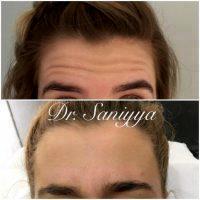How Often Do You Need To Do Botox?
Frequency of Botox injections
The duration between Botox injections for our patients does not depend on their age or the severity of the wrinkles. Rather, the product itself degrades at a similar rate for all patients and this period is usually between 3-4 months.
This does depend somewhat on the location int eh face that is injected as areas with lots of movement (like around the mouth) will need to be injected more frequently.
What does change from patient to patient is the number of units used to achieve the desired result.
Generally speaking, older patients need more units than younger ones to accomplish a similar appearance.
We do have plenty of Botox in their early 30’s who are in your same situation ad the age that our patients try and use Botox consistently is getting younger all the time, especially with the high sun exposure rates in Southern California. (Harold J. Kaplan, MD, Los Angeles Facial Plastic Surgeon)

How Often Does Botox Need To Be Reapplied To Maintain Its Effect
The duration of the response to botox varies from patient to patient and depends on a variety of factors. In the majority of patients , botox last for 3 to 4 months, but in some cases it may last only 2 months, while in other cases it may last up to 8 months.
These variations occur for several reasons. In some patients, the facial muscles may be unusually strong or large and for this reason botox wears off quickly. There may also be variations in the patient’s aesthetic goals.
Some patients may want a stronger effect from botox with obliteration of all facial lines of expression even during facial animation. While others may still want a more expressive face during animation. These aesthetic goals can affect how much botox is utilized and it’s duration of action.

Last Six Months
Botox approx. every 4-5 mos regardless of age
The frequency with which you get Botox injections should not be based on your age. Often, if someone is new to Botox, they will need to have the procedure done again in as early as 4 months.
With repeated injections, the muscles that are being treated by the Botox weaken and the patient will require injections less often to maintain the same level of control. (Arash Akhavan, MD, FAAD, Manhattan Dermatologist)
There’s no time limit for Botox injections
Botox will help your glabellar lines and if they aren’t severe you’ll get a good result. Initially you may need to go every 3-4 months but the more you paralyze the muscle the less frequently you’ll need to go. (Christopher L. Hess, MD, Fairfax Plastic Surgeon)
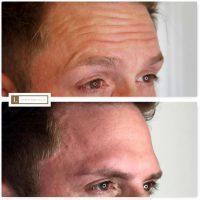
People Are Officially Interested In Injectable, Non-invasive Treatments
Botox can help your dynamic wrinkles
Botox can help your dynamic wrinkles. There is no difference in how long Botox lasts depending on age. Botox typically lasts between 3 and 6 months. So, the frequency of injections really depends on how your body responds to Botox and how quickly wears off. (David Shafer, MD, FACS, New York Plastic Surgeon)
Botox treatment will last 3-4 months
Each person will resond in a different way. Younger patienst usually have more elastic tissue and result last longer. Your genes, lifestyle, sun exposure, and skin care will dictate the result and effectiveness of the treatments. (Kamran Khoobehi, MD, New Orleans Plastic Surgeon)
Botox timing interval is 3 months on average for all age groups
Time intervals between Botox treatments are very similar across all age groups at an average of 3 months. The dosage of Botox that is administered during each treatment is dependent on the strength of the muscles, also not really age dependent.
No fixed time frame for Botox injections
The effects of BOTOX last about 4 months. However this varies based on the individual and individual perception. I recommend the mirror test to my patients. If you are not noticing anything in the mirror, then you don’t need more BOTOX.
If what you are seeing is bothering you, then it is time to be retreated. I have patients who show up every two and a half months for BOTOX. They are basically telling me that they do not want to see any effect wear off.

The Duration Of Botox Effect Will Vary Depending On The Condition For Which You Are Treated
We encourage our patients to do what makes the most sense for them. Objectively, I find that a typical BOTOX treatment would benefit from retreatment at 4 months but there is usually some overall effect still presendt at 5 months. (Kenneth D. Steinsapir, MD, Beverly Hills Oculoplastic Surgeon)
Frequency of Botox injections is not age-dependent
The effects of Botox can vary considerably from person to person but on average is from 3-4 months. Since you have never had Botox before, I suggest that after the initial injection, you wait until you begin to notice the effects wearing off before you get another injection.
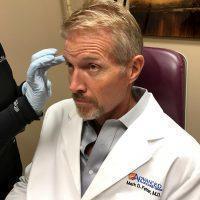
The Duration Of The Botox In General Lasts About 4-6 Months
Botox benefit seems to last 4 to 5 months, independent of age
To smooth the wrinkles, the muscles need to stay partially relaxed. And Botox relaxes the muscles for about 4 or 5 months, whether the wrinkles are superficial or deep. That’s why the duration of benefit does not vary much with age.
You may need fewer units of Botox during each treatment, since your lines are not deep.
The key is to inject the Botox in precisely the right anatomical spots for maximum benefit and also to avoid complications like a droopy eyelid.
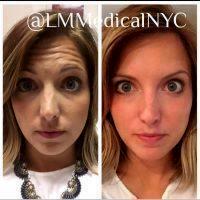
The Effect Lasts 3 To 6 Months
This looks great in many women. Most patients come back every 5 or 6 months, by which time the effect is mostly gone. (George J. Beraka, MD (retired), Manhattan Plastic Surgeon)
Age doesn’t affect how frequently you should get Botox
For most people, the effects of Botox will last between 2 months and 6 months with the average being 4 months. Some wrinkles form because muscles bend the skin in certain places over and over again, which weakens the collagen in your skin.
This creates wrinkles and creases just like bending a piece of paper or a credit card will eventually create a crease. Botox stops wrinkles by stopping muscle motion so that your body can fill in the area of the wrinkle with Botox.

The Effect Of Botox Can Last For 4-5 Months Or More
Botox lasts a average of 3 months, sometimes less and other times longer. Age does not factor in the duration of botox. COnsult with a board certied injector. (Jeff Angobaldo, MD, Dallas Plastic Surgeon)
Botox generally lasts about 4 months. The patients age has no bearing on how long the Botox will last on them. (Francis X. Fleming, MD, Kennewick Plastic Surgeon)
Younger people may need less Botox, but can still benefit.
Botox works for everyone, but I disagree with a lot of the marketing hype that says you should start with it BEFORE you even get a wrinkle. That’s a bit too aggressive. You could probably benefit from a low enough dose of Botox to soften your ability to crease the skin without totally freezing you.

The Effect Of Botox Disappears After 6 Months
If you do keep up your treatments regularly, you will gradually be able to come less often, since your muscles and skin will be used to resting! (Jessica J. Krant, MD, MPH, New York Dermatologic Surgeon)
No matter how young you are Botox needs to be repeated once every 3-4 months. If you are younger, your skin is thicker and hence the wrinkles are not as visible as someone older who has thinner skin.
So the number of units per treatment will be less. (Naveen Somia, MBBS, PhD, FRACS, Sydney Plastic Surgeon)

Three Months After The Break And Then Re-injecting
Most patients receive Botox injections every 4-8 months. (William Portuese, MD, Seattle Facial Plastic Surgeon)
Some people start their treatments early to avoid having deep furrows later in life. Once on a routine maintenance of Botox and skin care products such as Obagi the face will tend to look younger for many years to come. (Paul Vitenas, Jr., MD, Houston Plastic Surgeon)
When you have Botox or Dysport treatments, the effects typically last 3-4 months and patients seem to get treatments at 6 month intervals.
Your age has less to do with the interval between Botox or Dysport Injections as does your desire to reduce the unwanted lines and wrinkles and keep them away.
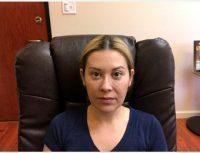
Botox Injection With Doctor Faraz Valaie, MD, Newport Beach Physician
It’s really up to you and you should see how you feel. (Francis R. Palmer, III, MD, Beverly Hills Facial Plastic Surgeon)
If an appropriate dose of Botox is delivered the wrinkle smoothing effect on the average lasts about 4 months (both longer and shorter intervals are seen). For the best effect with smallest likelihood of complications you should seek a Plastic surgeon / Dermatologist who injects his own Botox.
Substandard or BAD Botox results are associated by receiving Botox from a NON-Plastic Surgeon / Dermatologist, use of expired or gray market Botox, use of dilute Botox among others. (Peter A. Aldea, MD, Memphis Plastic Surgeon)
Usually Botox lasts about 4 months but by about the third month you start to see some movment in the muscles. (Steven Wallach, MD, New York Plastic Surgeon)
Less Botox Needed if Muscle Activity Warrants It
Typically, the dose of Botox or Dysport is influenced by the strength of the muscle activity at the site of injection. Stonger muscles warrant higher doses, and weaker muscles warrant lower doses. Even though you are young, if you are troubled by the lines you are seeing around your forehead and eyes, you will likely benefit from botulinum treatment.
Starting before these lines become permanently etched in your face is a great way to stay looking young. (Randolph Capone, MD, FACS, Baltimore Facial Plastic Surgeon)
Age and Botox Duration
Age doesn’t seem to be as important as a person’s individual response to Botox. Although everyone is a bit different, on average the changes you see after injection will begin to fade at the 3-4 month mark, and it will likely take 6-7 months for the effects to wear off entirely.
However, patients who are treated on a regular basis may experience an increase in the duration of the effect over time. (Samuel Lien, MD, Everett Plastic Surgeon)
